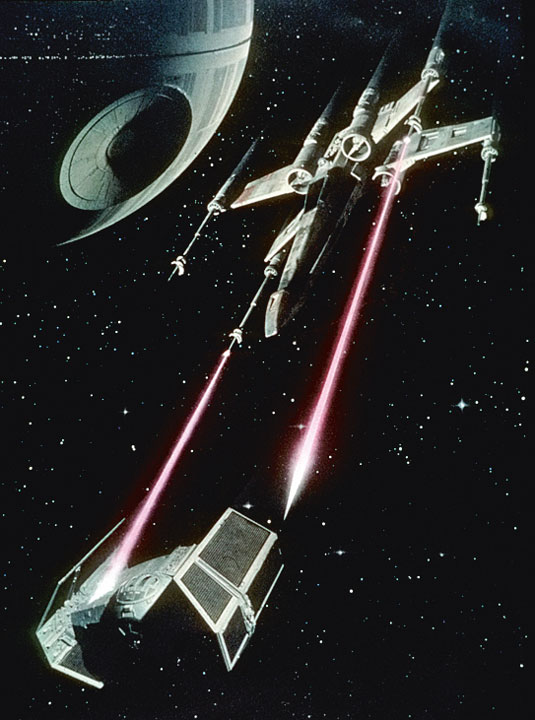The secrets behind Star Wars' special effects
It was the movie that changed everything. But Star Wars was made on an X-wing and a prayer, reveals Oscar-winning Richard Edlund
Lofty solutions
Dealing with the technology of FX for Star Wars was interesting because so much of it was groundbreaking. Back in the 1970s that could mean something as simple as pulling a good matte.
John Dykstra's idea was to shoot everything with a front light/back light, but Edlund felt there was a better solution. "To shoot the front light/back light, you shoot the hero shot of the model against black, and then you put a white background behind the model and then shoot a matte pass.
"The problem with the matte pass is that the blurred edges on a back light matte are not going to be anywhere near the same as the blur on the hero pass, so your mattes aren't going to work. I said, the only way I can think of that you can extract a matte that will fit the ship is to do blue screen." After a bit of discussion, John agreed.

Edlund contacted LaMar Stewart at Stewart Filmscreens, who manufactured seamless screens for theatres. LaMar had invested a great deal of time perfecting a building with a flawlessly flat ceiling surface.
Using a moving gantry they would spray several passes of vinyl on to this surface. It was like a mirror; the paint would stick to it but not adhere, and once the process was completed they could peel the finished screen off the ceiling in one perfect sheet.
Big blue box
Using this technique, "he made us a 12 foot by 22 foot translucent blue screen that we could light from behind with fluorescent lights." It was a big, bright blue light box that would show up all the floaters in your eyes… "Al Miller, our resident electronic genius, figured out how to make fluorescents work on direct current rather than alternating current so that we could shoot high-speed photography on the screen and not have flickering problems.
"We could also shoot one frame per second motion control. Our task was all about coming up with a production line where we could shoot all those models and still meet the delivery date."
Daily design news, reviews, how-tos and more, as picked by the editors.
Next page: blue screens and the Death Star...

The Creative Bloq team is made up of a group of art and design enthusiasts, and has changed and evolved since Creative Bloq began back in 2012. The current website team consists of eight full-time members of staff: Editor Georgia Coggan, Deputy Editor Rosie Hilder, Ecommerce Editor Beren Neale, Senior News Editor Daniel Piper, Editor, Digital Art and 3D Ian Dean, Tech Reviews Editor Erlingur Einarsson, Ecommerce Writer Beth Nicholls and Staff Writer Natalie Fear, as well as a roster of freelancers from around the world. The ImagineFX magazine team also pitch in, ensuring that content from leading digital art publication ImagineFX is represented on Creative Bloq.
